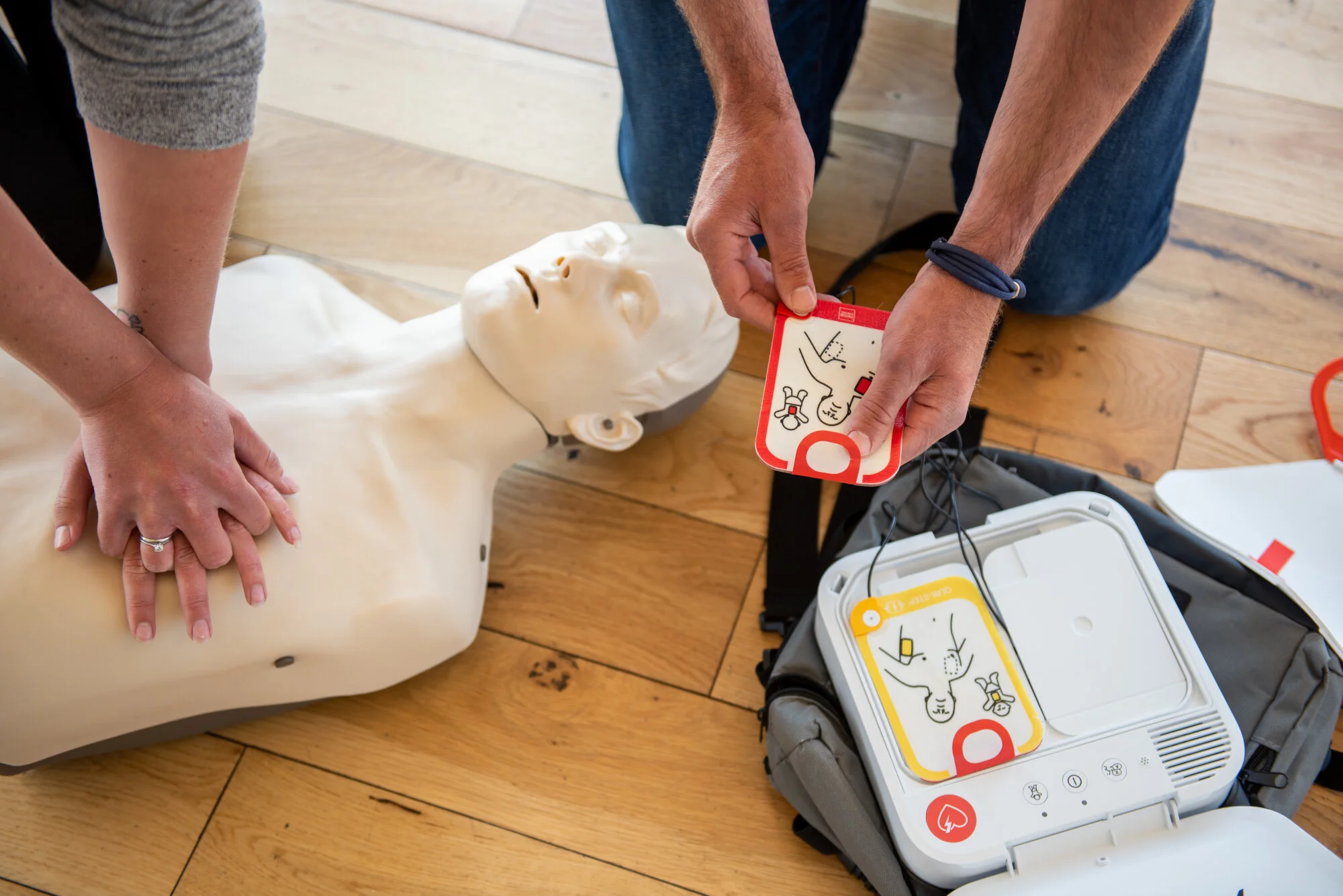Defibrillators.
When somebody has a cardiac arrest, their chance of survival is 74% provided they receive effective CPR immediately and a defibrillator is used on them in the first 3-5 minutes.
Source - British Heart Foundation
That’s why the Jay’s Aim team feels so strongly about increasing the number of public-access defibrillators here in South-West England, and why we work so hard to ensure communities have the confidence to use them in an emergency. This section of the website explains how defibrillators work and illustrates how easy they are to use, with or without training. Our interactive defibrillator map also shows all the locations in South West England for which we have provided defibrillators

What is a defibrillator.
A defibrillator is a relatively small portable device that can be attached to a casualty’s chest with two electrode pads. Defibrillators are simple to operate, and will give audible (and sometimes visual) prompts to the rescuer; no training is needed to operate one. When its electrode pads have been placed on a casualty, the defibrillator will register the electrical rhythm of the casualty’s heart and analyse whether an electric shock is required. If the casualty’s heart rhythm is irregular, the defibrillator will alert the user and guide them in administering a shock to the casualty;
this will stop the casualty’s heart and allow it to attempt to restart itself in the correct, regular rhythm. If the defibrillator senses that a shock will not help, it will let the responder know that no shock is required. Defibrillators will take the rescuer through all the steps of CPR with audio and/or visual prompts, and often include a ticking ‘metronome’ sound to help the rescuer stay in time when giving chest compressions and rescue breaths. The Zoll AED 3 (the model used by Jay’s Aim) also provides real-time feedback on the CPR being given; for example, it will inform the rescuer that they need to push harder on the casualty’s chest.
Although you do not need to be trained to use a defibrillator, at Jay’s Aim we’ve seen first-hand that basic training gives extra confidence to members of a community with a defibrillator close by. Our training sessions use replica defibrillators that look exactly like the real thing, allowing participants to familiarise themselves with exactly what to expect should they ever need to use one in an emergency.
Public-Access Cabinets
Jay’s Aim believes that, wherever possible, defibrillators should be placed in public-access cabinets. A public-access cabinet uses a very small amount of electricity (estimated at £10 a year) to house a defibrillator so that is protected from the elements, lit at night and heated in cold weather. This ensures the defibrillator is available for anyone to use, all day, every day. Cabinets can use a number lock, a locking system controlled remotely via WIFI, or no lock at all. To access a locked cabinet, the rescuer needs to call 999 and quote the ‘call sign’ shown on the cabinet. The caller will then either be given an access code for the number lock, or the cabinet will be unlocked remotely by the call handler. To open an unlocked cabinet, you simply use the handle as you would any normal door. At Jay’s AIM we use a variety of locked and unlocked cabinets. We prefer to use unlocked cabinets whenever possible, as they allow a quicker response time - crucial in an emergency.
How to use a defibrillator.
Defibrillators are straightforward to operate, and from the moment they are switched on they will give voice and sometimes visual commands to the rescuer. However, as a guide, the information below outlines what to expect should you need to use one in an emergency.
Turn the defibrillator on.
Most defibrillators have a large, brightly coloured on/off button. Some will turn on as soon as the lid of the defibrillator is opened.
Peel off the sticky pads and place them on each side of the casualty’s chest.
The sticky pads or the defibrillator will have a picture on them, showing exactly where they go on the chest.
Stop CPR to let the defibrillator analyse the heart and give a shock if needed.
As soon as the pads are attached to the patient, the defibrillator will request that CPR stops so it can analyse the casualty’s heart rhythm. If a shock is required, the defibrillator will tell the user to press the ‘shock’ button; it is important that the user stands well clear of the casualty throughout this process.
Resume CPR.
When the analysis has been completed and a shock given (if needed), the defibrillator will tell the user to resume CPR.
Continue giving CPR.
The defibrillator will give instructions for continuing CPR until the person regains consciousness.
Learn how to use a Defibrillator.
Watch the Jay’s Aim how to use a defibrillator short film to learn just how easy it is.



